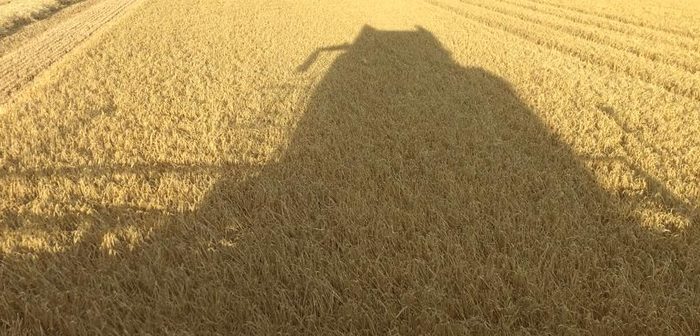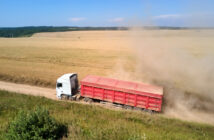This week AHDB has published the 2022/23 Early Balance Sheets for wheat and barley which is the first look at the supply and demand for the coming year. This is an overview by Millie Askew, senior analyst at AHDB, of the main supply and demand drivers as well as the key areas to watch as the season progresses.
Wheat
A larger crop in 2022, has outweighed a rise in demand leading to a substantial exportable surplus for 2022/23. Key watch points for this season includes bioethanol and animal feed demand with margins continuing to be squeezed for both respectively.
Availability
With larger carry-in stocks and production, outweighing a projected fall in imports this season, availability of wheat is expected to be 8% up on the year at 18.735M tonnes.
Wheat production is currently pegged at 15.664M tonnes, up 12% on the year, driven largely by higher than average yields. It is important to note that Defra were unable to publish provisional cereal and oilseed production estimates this year due to a lack of data from UK nations. Instead, Defra published production estimates for England only. While Defra will be able to publish final UK estimates on 15 December, it was imperative that there was a UK figure available before halfway through the season. As such, AHDB have consulted with Defra and industry to produce production estimates for Wales, Scotland and Northern Ireland. These have been combined with the provisional Defra England figures to produce UK productions estimates for the use in the Early Balance Sheets.”
With a larger domestic crop this year, and imports not pricing competitively, full season imports are expected to drop this season to 1.225M tonnes, down 769K tonnesyear on year.
Usage
Total usage of wheat this season is expected to increase by just over half a million tonnes to 15.224M t, driven mainly by increased demand from the bioethanol sector.
With Vivergo fuels coming back online earlier this calendar year and with maize not pricing that competitively, it is expected that wheat usage by the bioethanol sector will increase this season. It is assumed for the purposes of these balance sheets that both bioethanol plants will remain in operation throughout the season. However, with rising input costs and the prospect of cheaper imported ethanol, domestic bioethanol margins are being squeezed. As ever, bioethanol demand will remain a key watch point this season.
Usage of wheat in animal feed is also expected to increase slightly on the year. Despite animal feed production projected to fall this year, driven largely by a drop in monogastric feed, the inclusion of wheat in rations is expected to be higher. This is due to the sheer availability and relative price competitiveness of the grain this season. Again, animal feed demand also remains a watch point with producer margins being ever squeezed by rising input costs.
Balance
The increase in wheat usage is not enough to outweigh the rise in availability which has led to a balance of 3.511M tonnes, 31% up year on year. With an operating stock requirement of 1.500M tonnes, this leaves an exportable surplus of 2.011M tonnes, more than double the amount in 2021/22.
Barley
The barley balance is expected to be heavier this season on the back of higher supplies and a reduction in demand. However, the balance remains below the previous five-year average.
Availability
Despite smaller carry-in stocks, the total availability of barley this season is expected to be 120Kt higher than in 2021/22 at 8.229M tonnes due to a rise in production.
Barley production is estimated at 7.190M tonnes, 229K tonnes up on the year. The rise in output is due to higher than average yields outweighing a smaller planted area. As with wheat, barley production has been estimated by AHDB for the purposes of these balance sheets.
Usage
Despite a projected rise in usage by the brewing, malting and distilling sector (BMD), a fall in animal usage has led to total domestic consumption of barley to decline by 155Kt on the year to 6.154M tonnes.
Despite the increase in cost of living BMD usage of barley is expected to remain robust this year with increased distilling capacity available in Scotland this season too.
Demand for barley in animal feed is expected to fall on the year by 196k tonnes. At the start of last season barley was being included heavily in rations, which was a lag from 2020/21 when there was ample supply of barley. As there was a large wheat crop last season, wheat then featured more heavily in rations from around Q2 at the expense of barley. This trend is expected to continue this season, with the plentiful supply of domestic wheat.
Balance
With a larger supply and lacklustre demand, the barley balance is projected to increase this year by 276K tonnes to 2.075M tonnes. Despite being higher on the year, the balance remains slightly below the previous five-year average. Taking into account an operating stock requirement of 800Kt, this leaves an exportable surplus of 1.275M tonnes, 347K tonnes higher on the year.




